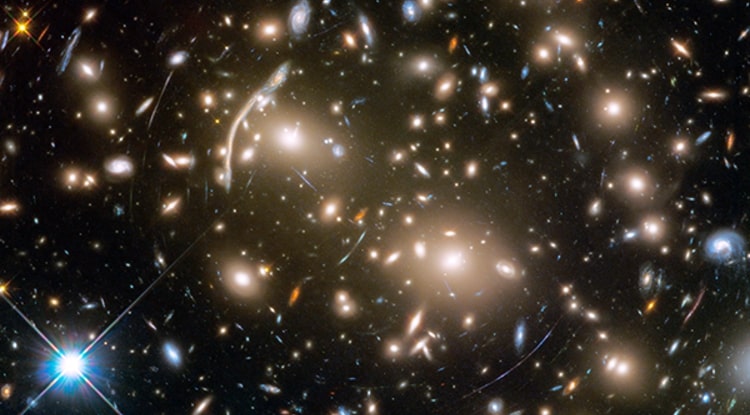
Researchers are discovering new facts about our universe by creating a “virtual universe machine” which models the way galaxies develop over time. A team from the University of Arizona created a computer simulation of 12 million different galaxies which stretched back through time from 400 million years after the Big Bang to today. To perform the trillions of complex calculations required to model a large chunk of the universe, they used a supercomputer to generate 8 million variations of the universe model.
“On the computer, we can create many different universes and compare them to the actual one, and that lets us infer which rules lead to the one we see,” Peter Behroozi, the study’s lead author, explained in a statement. “We took the past 20 years of astronomical observations and compared them to the millions of mock universes we generated. We pieced together thousands of pieces of information to see which ones matched. Did the universe we created look right? If not, we’d go back and make modifications, and check again.”

The models showed particularly interesting information about the role that dark matter plays in the evolution of galaxies. When the researchers created model galaxies based on the current expectations of dark matter, in which the presence of dense dark matter prevents galaxies from forming new stars early in their lives, they found the resulting galaxies appeared much redder than they do in reality. To create a model that matches what we actually perceive in the universe, the galaxies had to be adjusted so that they continued to produce stars later into their lives than expected.
“As we go back earlier and earlier in the universe, we would expect the dark matter to be denser, and therefore the gas to be getting hotter and hotter. This is bad for star formation, so we had thought that many galaxies in the early universe should have stopped forming stars a long time ago,” Behroozi explained. “But we found the opposite: Galaxies of a given size were more likely to form stars at a higher rate, contrary to the expectation.”
The findings are published in the Monthly Notices of the Royal Astronomy Society.
Editors' Recommendations
- Mystery of a strange, mirrored double galaxy solved using Hubble data
- Enormous sky survey creates the most accurate map yet of universe’s dark matter
- Could supermassive black holes be formed from dark matter?
- Hubble captures a galaxy that’s chock-full of dark matter
- Dark matter might be even stranger than we thought, according to Hubble




